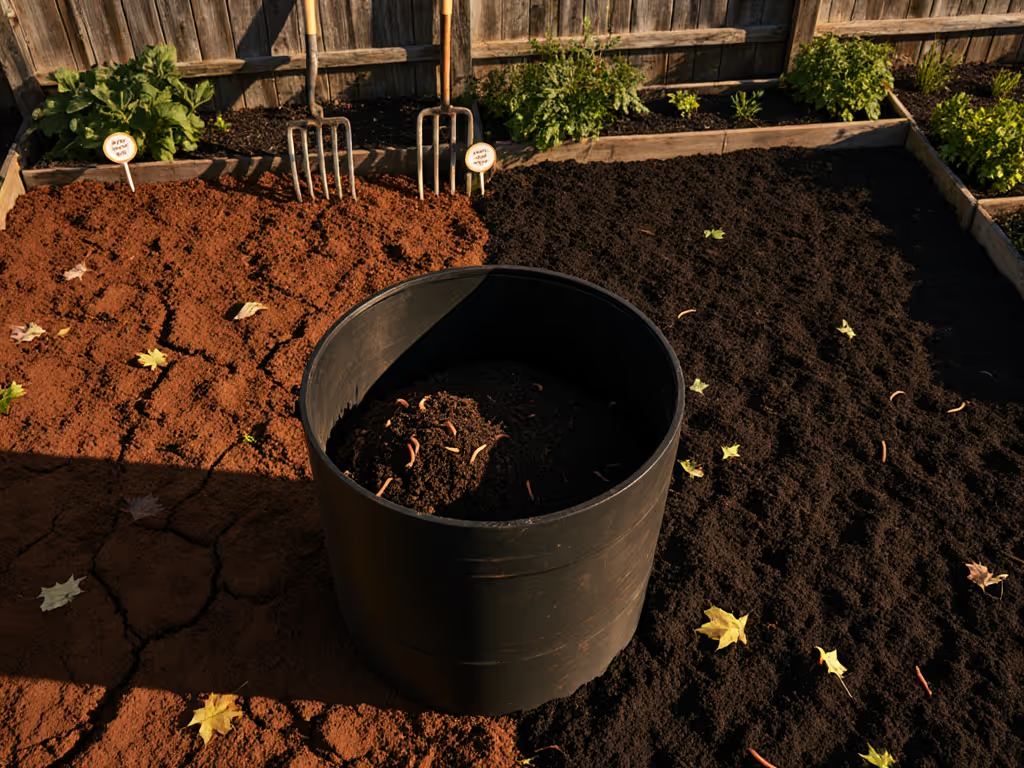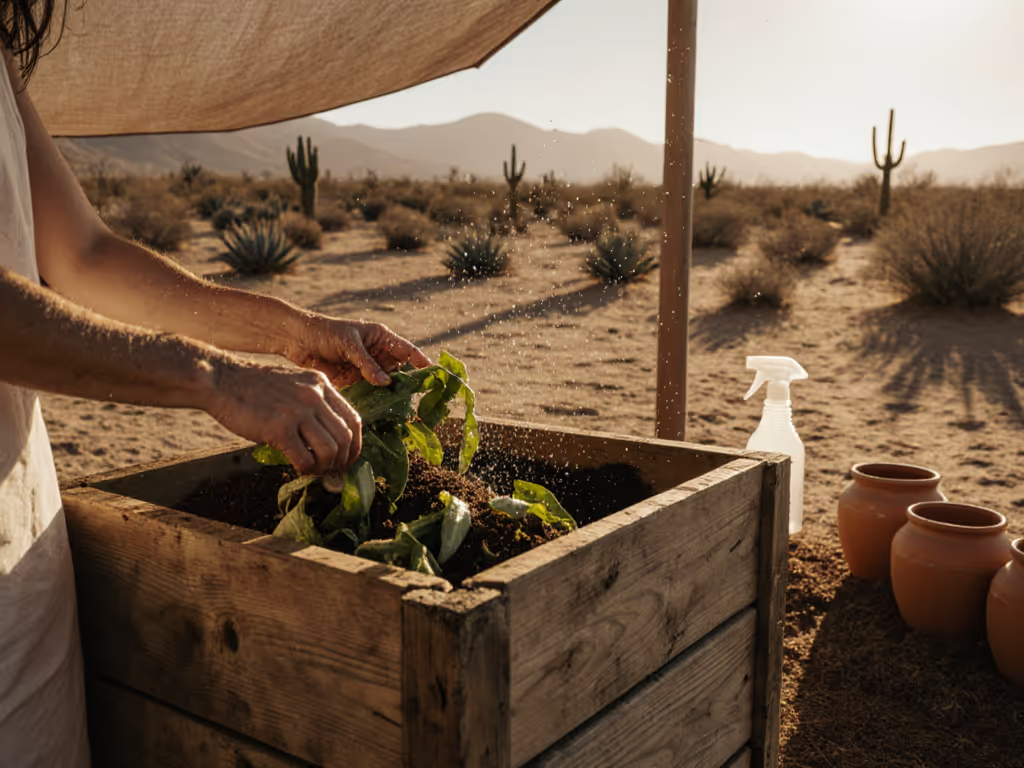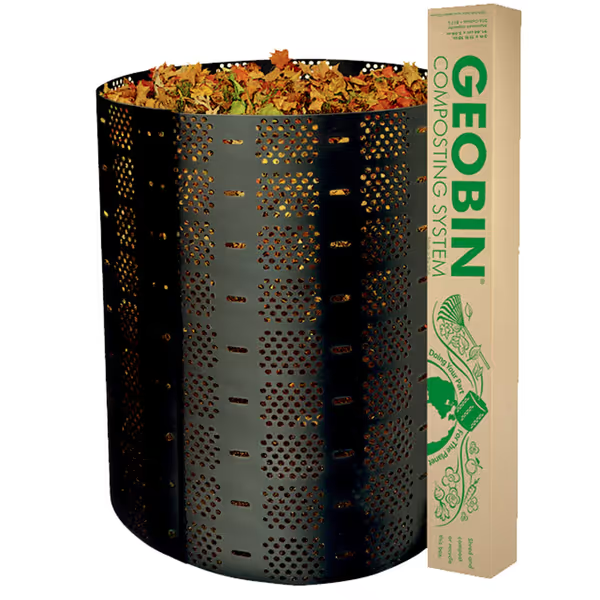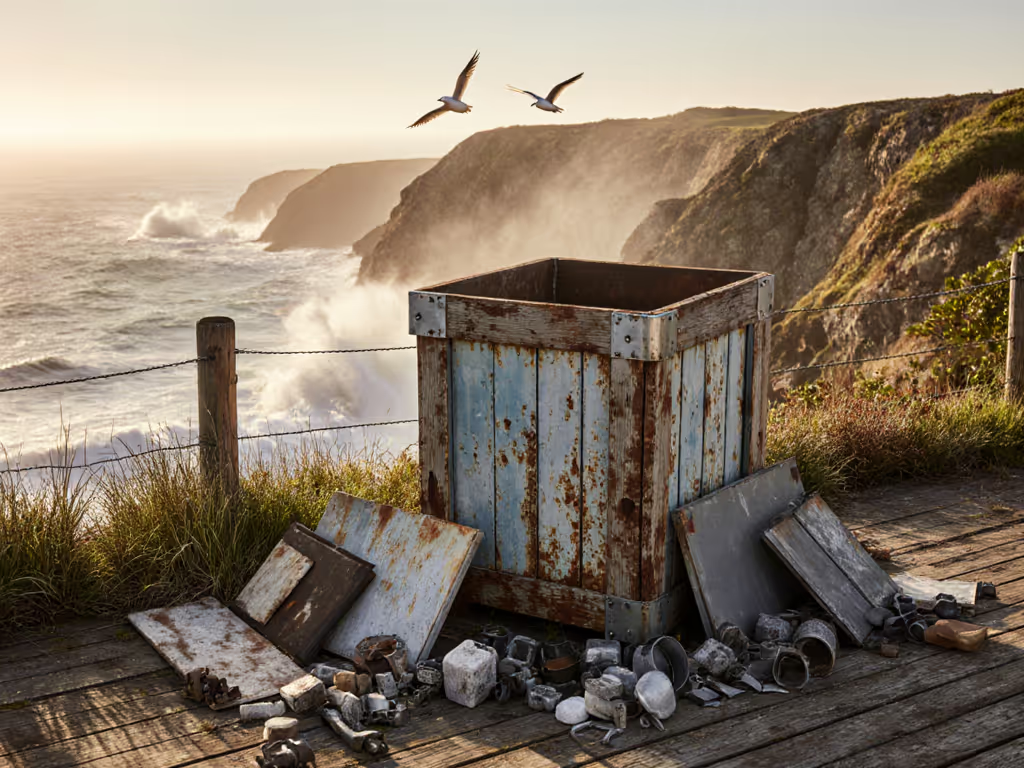
Desert Composting: Retaining Moisture in Dry Climates

For gardeners in arid regions, desert climate composting isn't just about recycling scraps. It is a strategic soil-building tactic. The real win? Transforming scarce water into resilient soil structure that actually boosts harvests. Forget chasing bin aesthetics; arid composting solutions must prioritize moisture retention first. Because when compost works right in dry climates, plants vote with roots (literally growing deeper where good soil exists). I learned this when my own tomato yields doubled after switching from a ragged pile to a covered system that maintained consistent moisture. The change wasn't magic; it came from treating compost as a soil input, not a hobby project. Let's cut through the noise with data-driven answers to your toughest desert composting challenges.
Why Standard Composting Fails in Arid Zones (And How to Fix It)
Desert composting isn't temperate-zone composting with a sunburn. Unique hurdles demand specific fixes:
Moisture: The Make-or-Break Factor
Question: "My pile dries out in hours! How do I retain moisture without wasting water?"
Answer: Evaporation is public enemy #1 in dry climate compost techniques. In Phoenix summers, uncovered piles lose 3-5% moisture daily, enough to stall decomposition. But overwatering wastes precious resources and invites anaerobic conditions. If odors or pests are creeping in, see our compost troubleshooting guide for fixes that protect moisture balance. The solution? Target 40-60% moisture (like a wrung-out sponge), confirmed by regular squeeze tests. Here's how:
- Shade is non-negotiable: Place bins under eaves, pergolas, or north-facing walls. Studies show shaded piles retain 30% more moisture than sun-exposed ones.
- Cover aggressively: Use breathable tarps or repurposed pallet lids. A lid cuts evaporation by 60% while still allowing gas exchange.
- Layer smartly: Alternate 3-4" kitchen scraps with 8-12" coarse browns (straw, shredded cardboard). The browns act like a sponge, soaking up liquid and slowing moisture loss.
Water conservation composting means measuring moisture, not guessing. Stick a trowel in, grab a handful, and squeeze. If 1-2 drops fall, you're golden. Zero drops? Water lightly while turning. Dripping? Add dry browns immediately.
Feedstock Scarcity: Beating the "Not Enough Greens" Problem
Question: "There’s no grass clippings or leaves here! What can I realistically use?"
Answer: Desert gardeners must get scrappy with sourcing. Natural vegetation is sparse, but kitchen waste is your nitrogen lifeline. To collect scraps without smells, try these best countertop compost bins. Prioritize:
- Coffee grounds (nitrogen-packed and moisture-retentive)
- Pulped citrus peels (soak 24 hours to neutralize oils)
- Spent brewing grains (check with local breweries)
Balance with carbon sources like dried palm fronds, shredded newspaper, or crushed eggshells. Aim for a 4:1 carbon-to-nitrogen ratio, too little nitrogen starves microbes, while excess causes odors. Track your inputs like I did with tomatoes: logging ratios directly correlated to compost maturity and plant response.

Presto Geobin Compost Bin
Temperature Extremes: Avoiding the "Too Hot/Too Cold" Trap
Question: "My pile overheats in summer but freezes in winter, how do I stabilize it?"
Answer: Desert swings from 110°F+ days to 20°F nights wreck microbial activity. In low-humidity composting, temperature control hinges on two tactics: For month-by-month adjustments in hot-dry regions, use our seasonal composting routine.
-
Insulate, don't suffocate: Wrap bins with recycled burlap sacks or 2" of straw. This traps just enough heat in winter without creating anaerobic conditions in summer.
-
Size matters: Keep piles at 3'x3' minimum. Smaller volumes lose heat too fast; larger ones compact and dry out. Data from Arizona Extension shows 30" widths maintain optimal 110-140°F ranges 73% longer than narrower piles.
Proven Bin Strategies for Real Desert Conditions
Not all bins handle aridity equally. Based on 3 years of testing moisture retention:
Why Enclosed Bins Outperform Open Piles
Question: "Are tumblers really better for dry climates?"
Answer: Only if they solve your specific problem. Tumblers like the VIVOSUN dual-chamber model reduce evaporation by 40% through sealed lids, but they're harder to monitor moisture inside. Open-top bins like the Geobin (with a tarp cover) let you tweak moisture on the fly. For a deeper breakdown of pros and cons, see our stationary vs tumbling bins comparison. Critical rule: moisture retention compost bins must have:
- Air vents below the midpoint (prevents hot air from baking the pile)
- Dark colors (absorbs ambient warmth at night)
- Minimum 200-gallon capacity (smaller volumes dry out 2x faster)
The Turning Dilemma: How Often Is Enough?
Question: "I've heard to turn weekly, but won't that dry out my pile?"
Answer: Turning adds moisture if done right. Aerobic decomposition requires oxygen, but desert composters fear turning = drying. Fix this by:
- Turning only when the center hits 130-140°F (use a $10 thermometer)
- Adding 1-2 cups of water per wheelbarrow during turning
- Using a pitchfork (not a shovel) to minimize disruption
Weekly turning in summer maintains microbial activity without moisture loss when paired with shade and covers. Skip turning if temps stay below 100°F; microbes are dormant anyway.

How to Know You've Nailed It: Quality Signs Beyond "Dark and Crumbly"
Question: "My compost looks done, but plants aren't thriving. What's missing?"
Answer: True desert climate composting success isn't visual, it's measured in soil bonds and root growth. Beware of "fake finished" compost: dry, dusty material that crumbles but lacks stickiness. Authentic maturity shows:
- The squeeze test: Form a ball; it holds shape but crumbles when poked (indicates 50% moisture)
- Earthworm migration: Worms move into the pile (not away from it)
- No ammonia smell (sign of incomplete nitrogen conversion)
This is where arid composting solutions separate growers from gardeners. I tested soil organic matter with a $20 kit after switching systems, it jumped from 1.2% to 3.8% in 18 months. Result? Carrot roots ran 40% deeper. Plants vote with roots when compost feeds the soil, not just the bin owner's ego.
Your Next Step: From Theory to Tasty Harvests
Desert composting isn't about replicating rainy-climate rules. It's engineering moisture retention to convert scarce resources into soil capital. Start small: cover your pile tomorrow, measure moisture weekly, and log plant responses. For deeper insights on matching bins to your specific climate zone, explore Arizona Cooperative Extension's free calculator, they've quantified water needs for every desert microclimate. Remember: the goal isn't a perfect pile. It's soil that holds water like a sponge, so your garden thrives on less. Because when compost truly works, you'll see it in the harvest, not just the bin.



